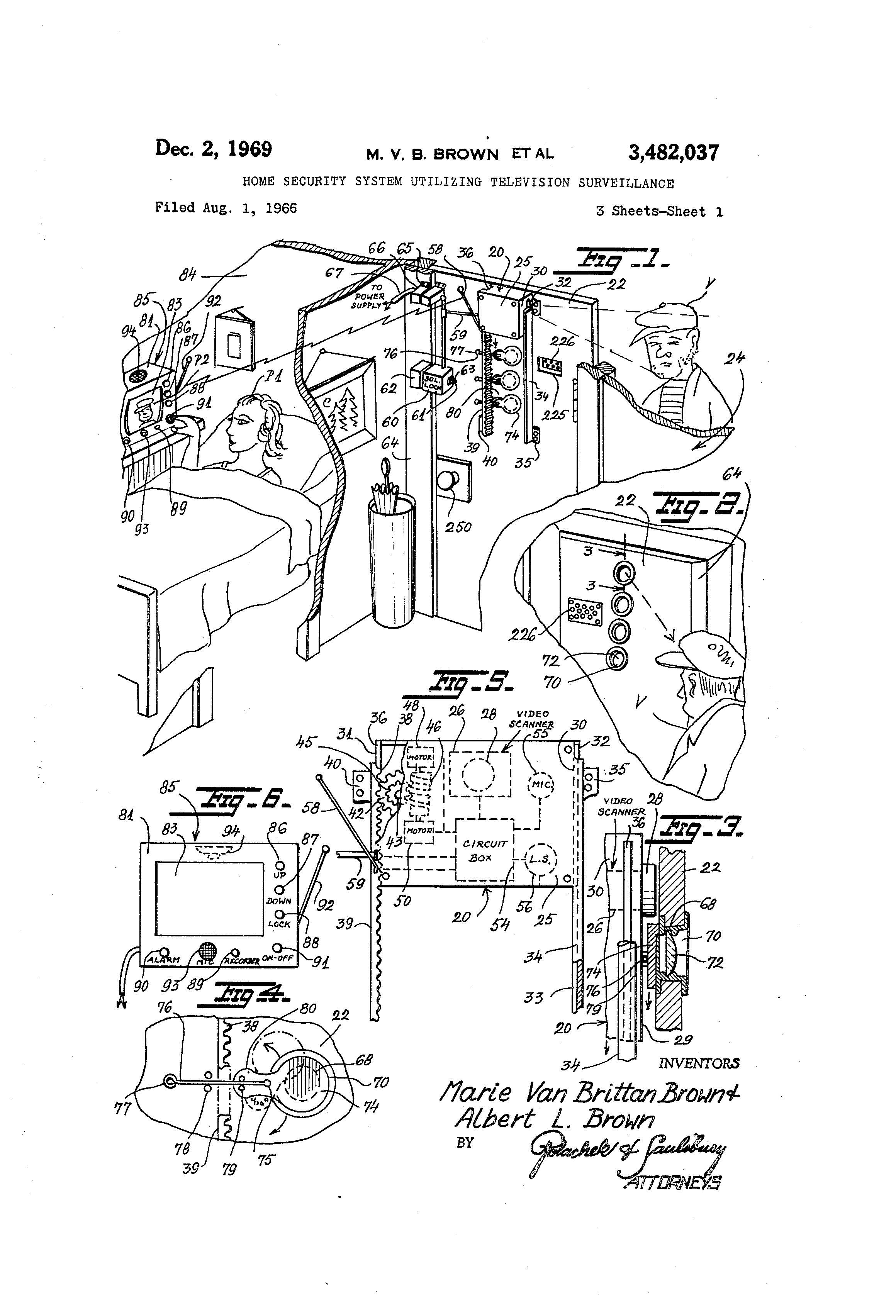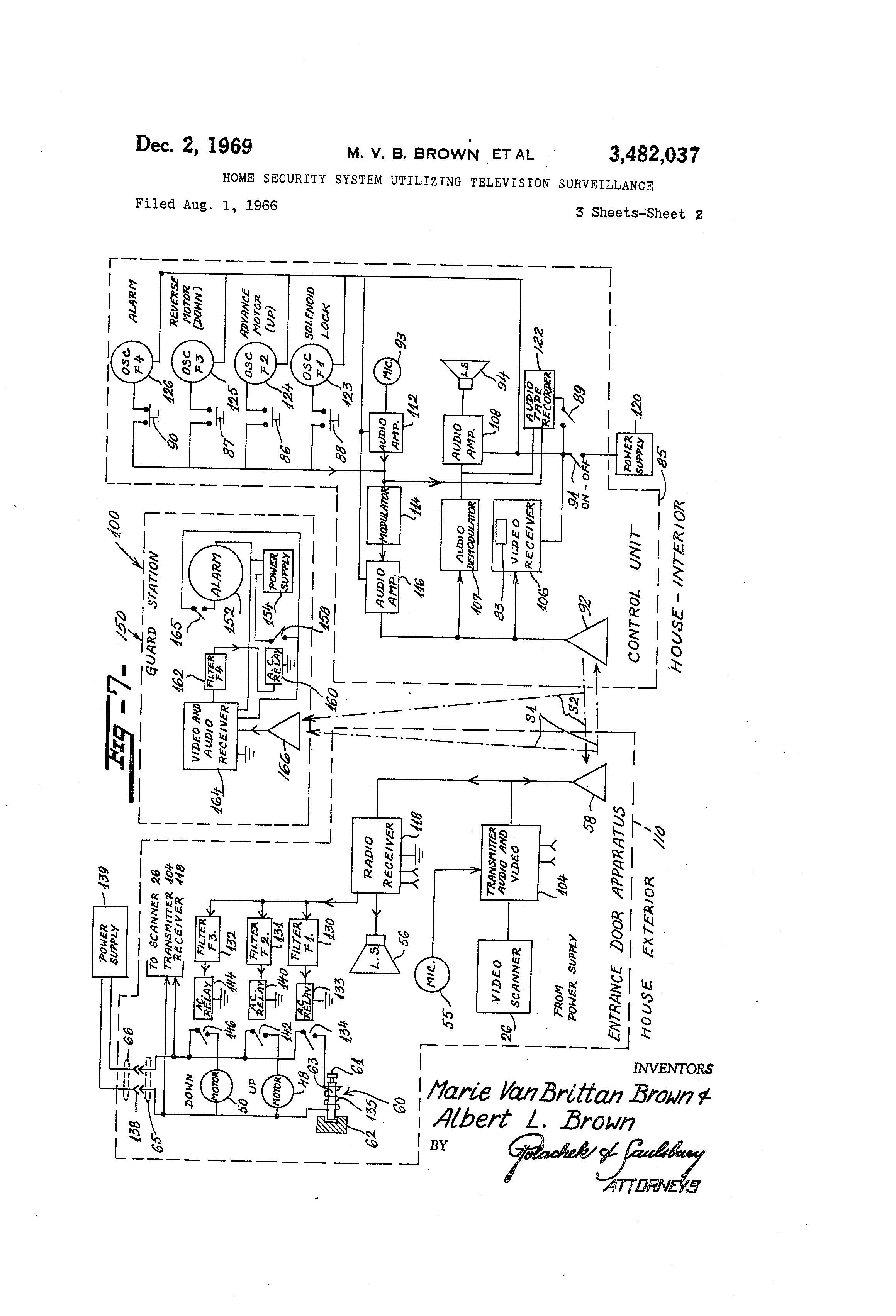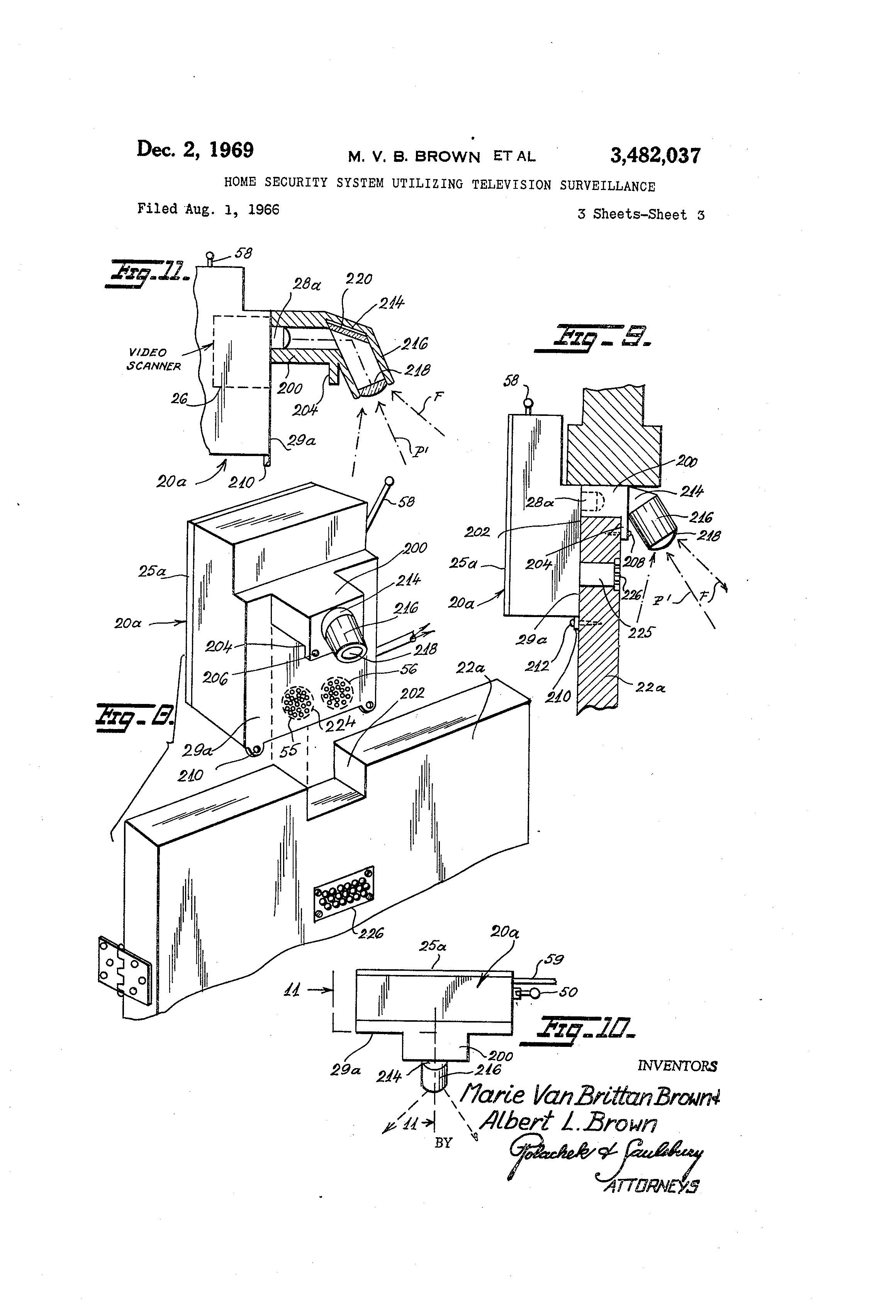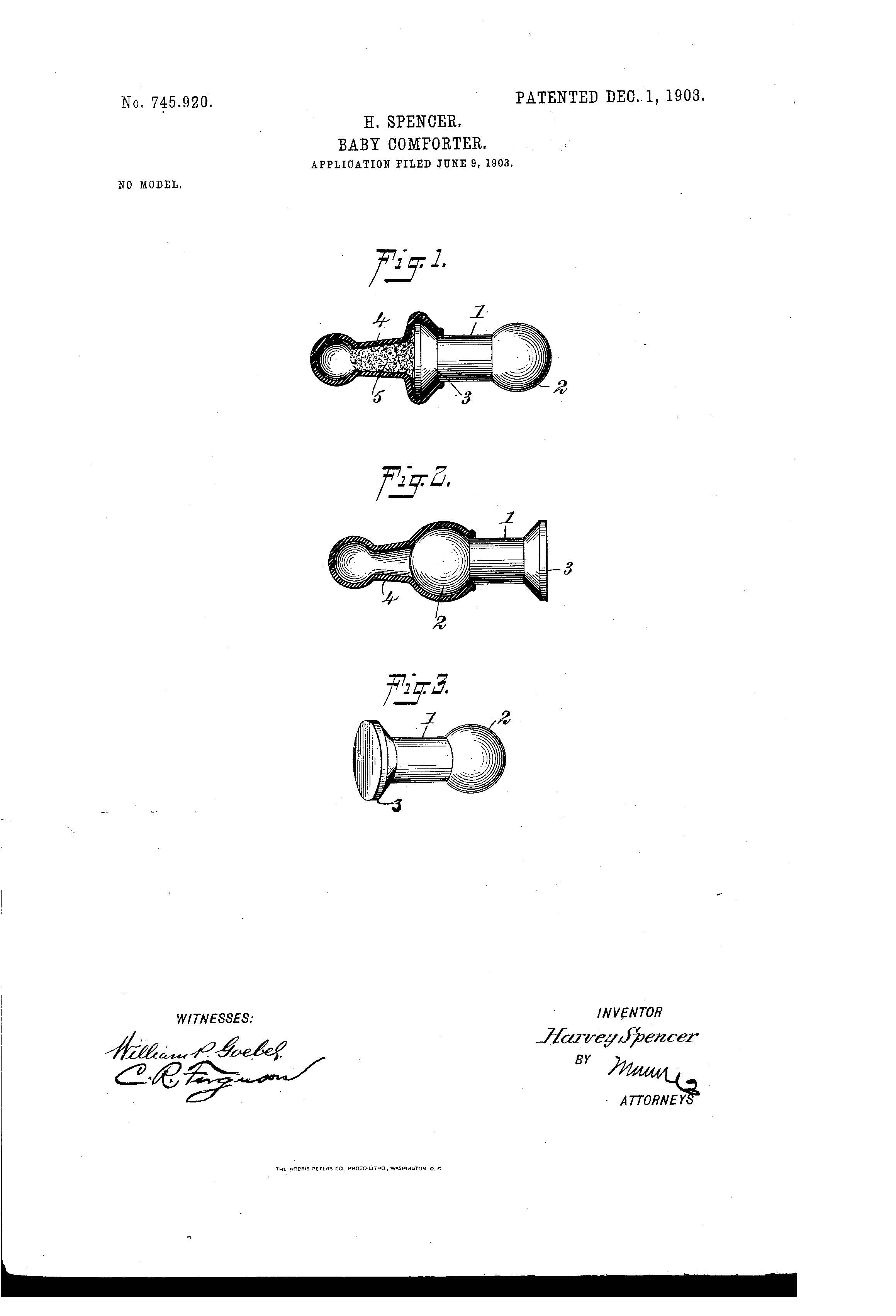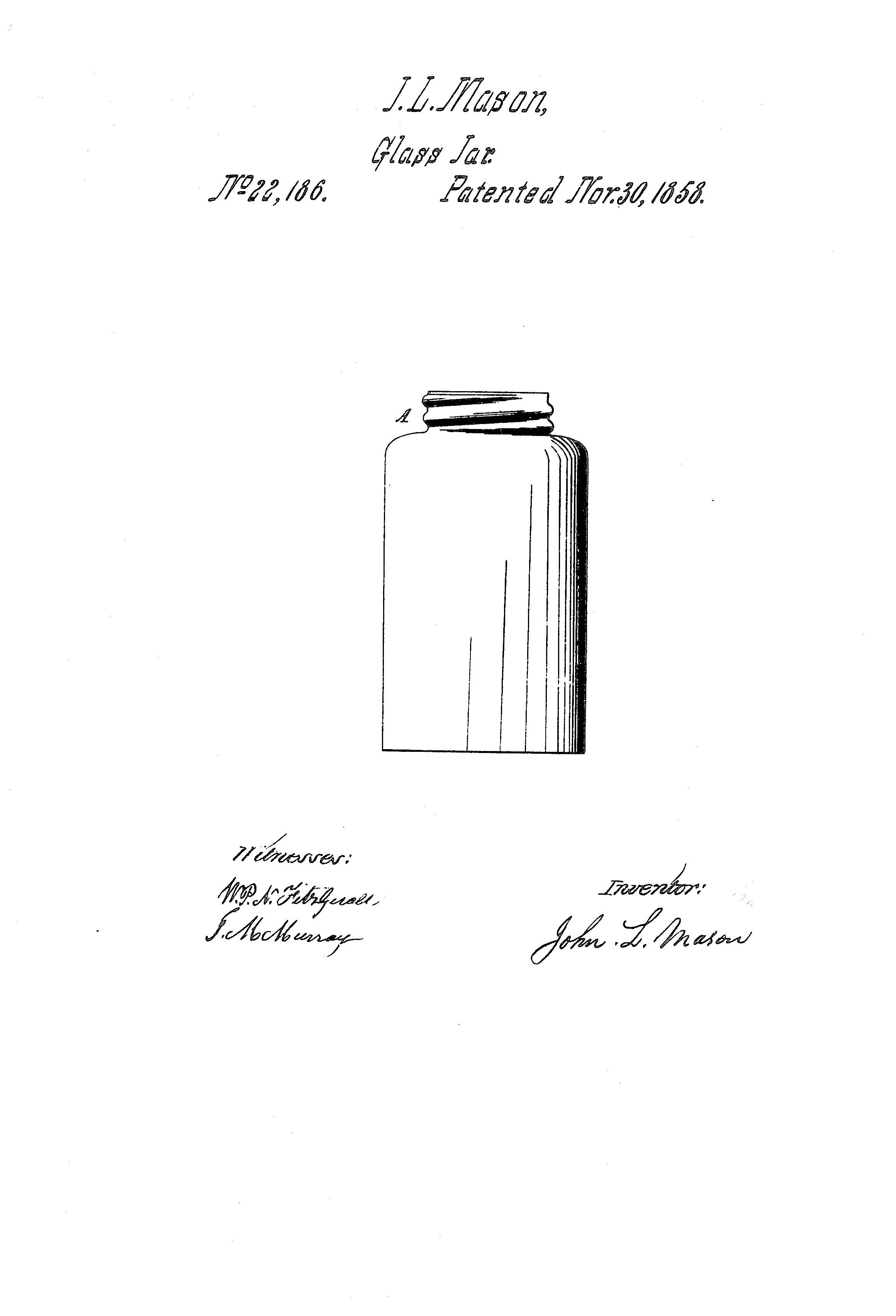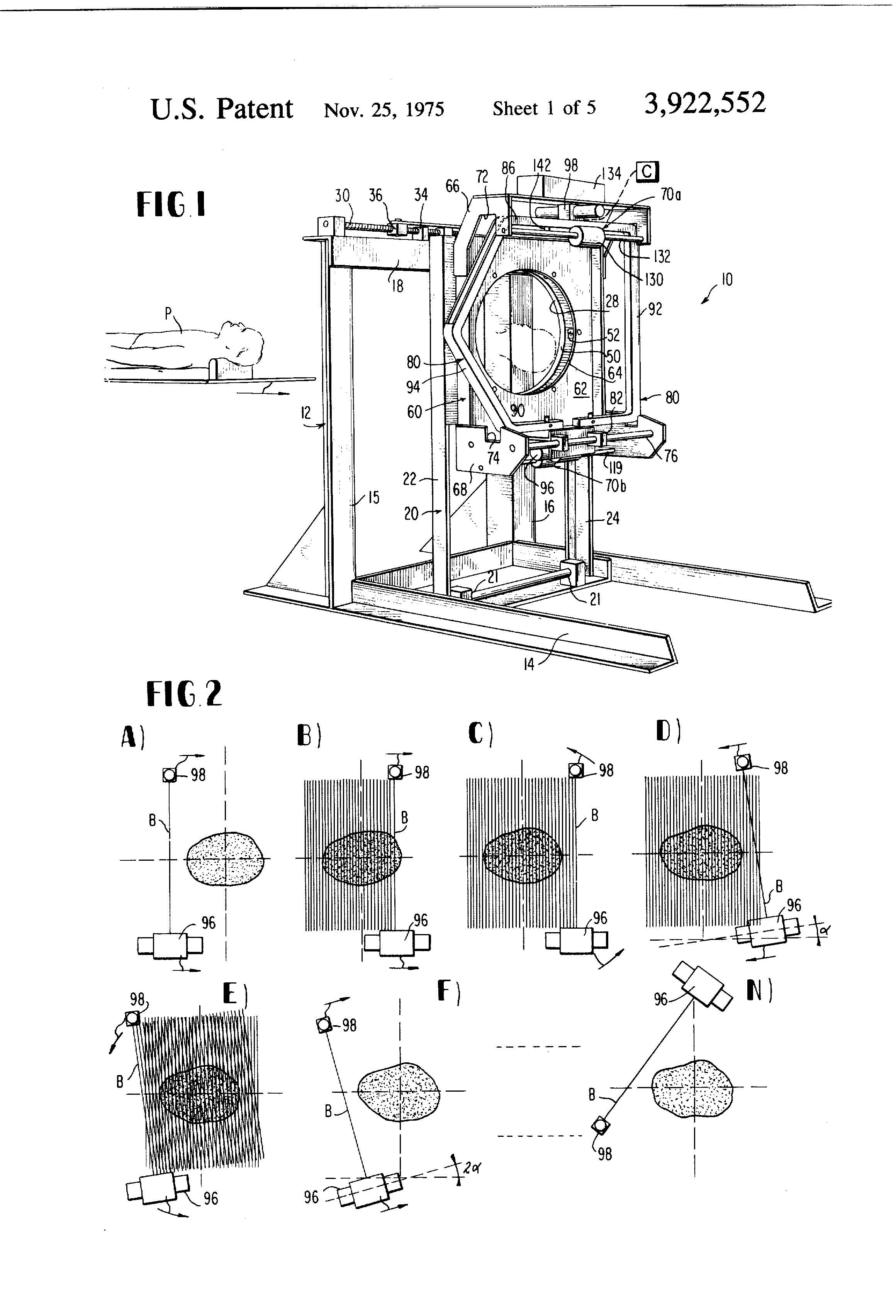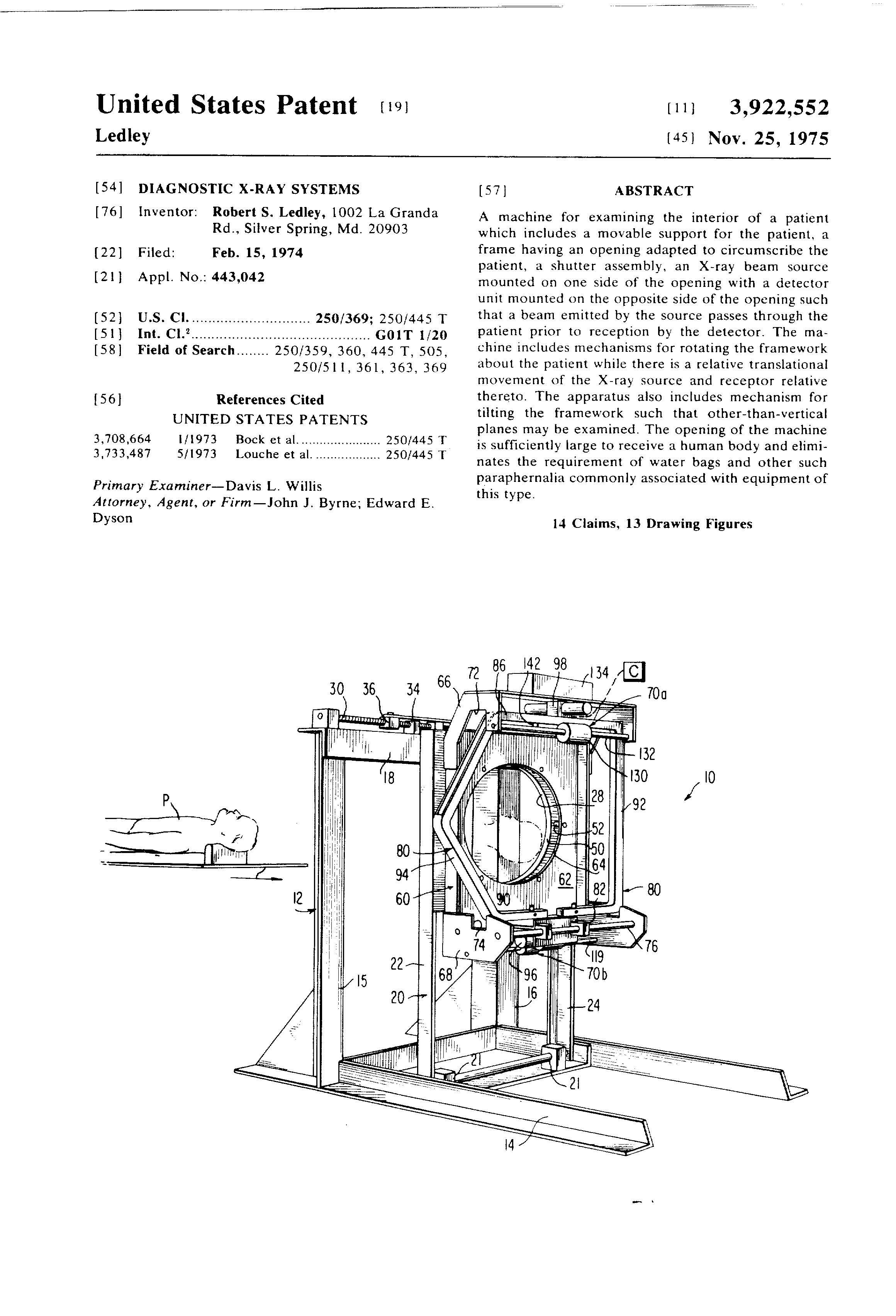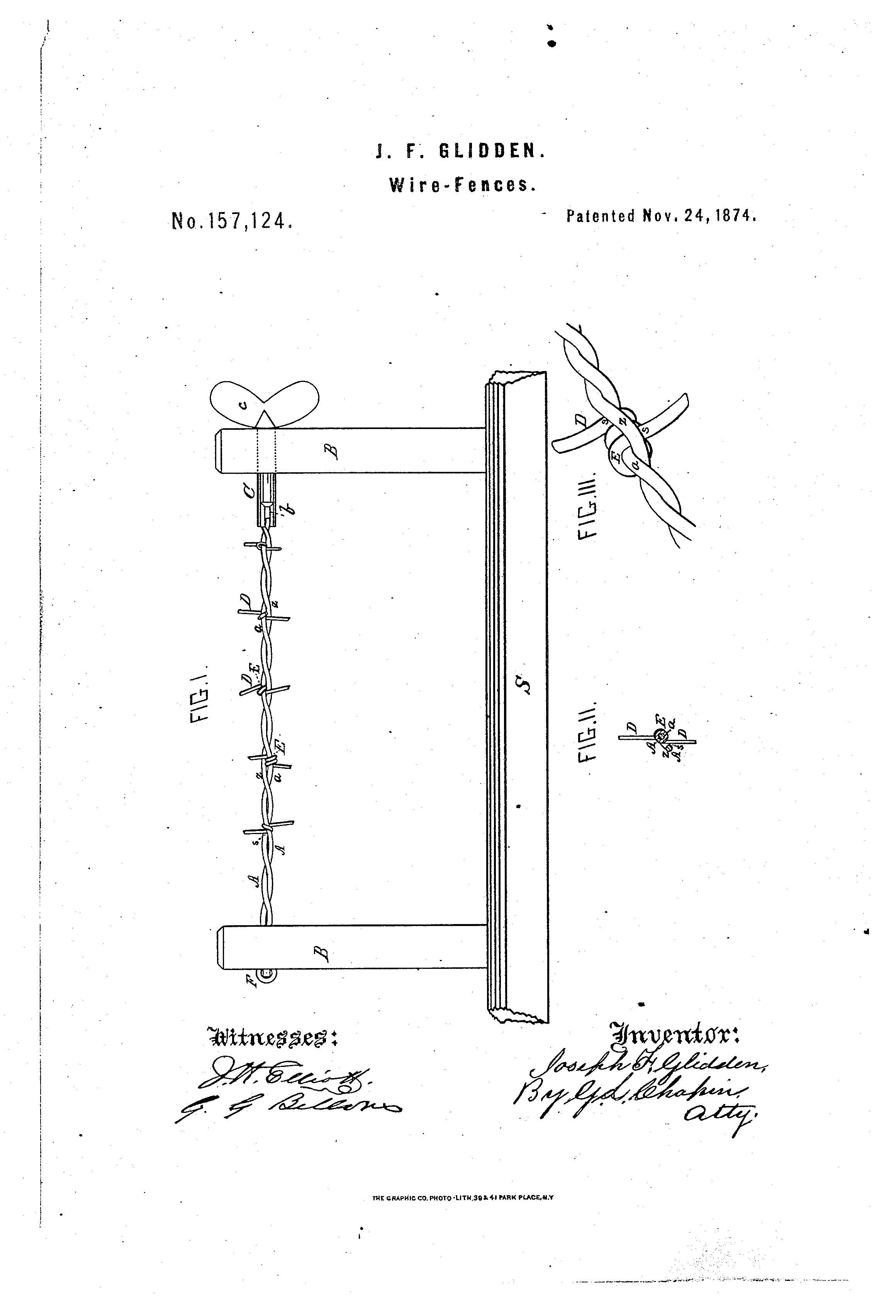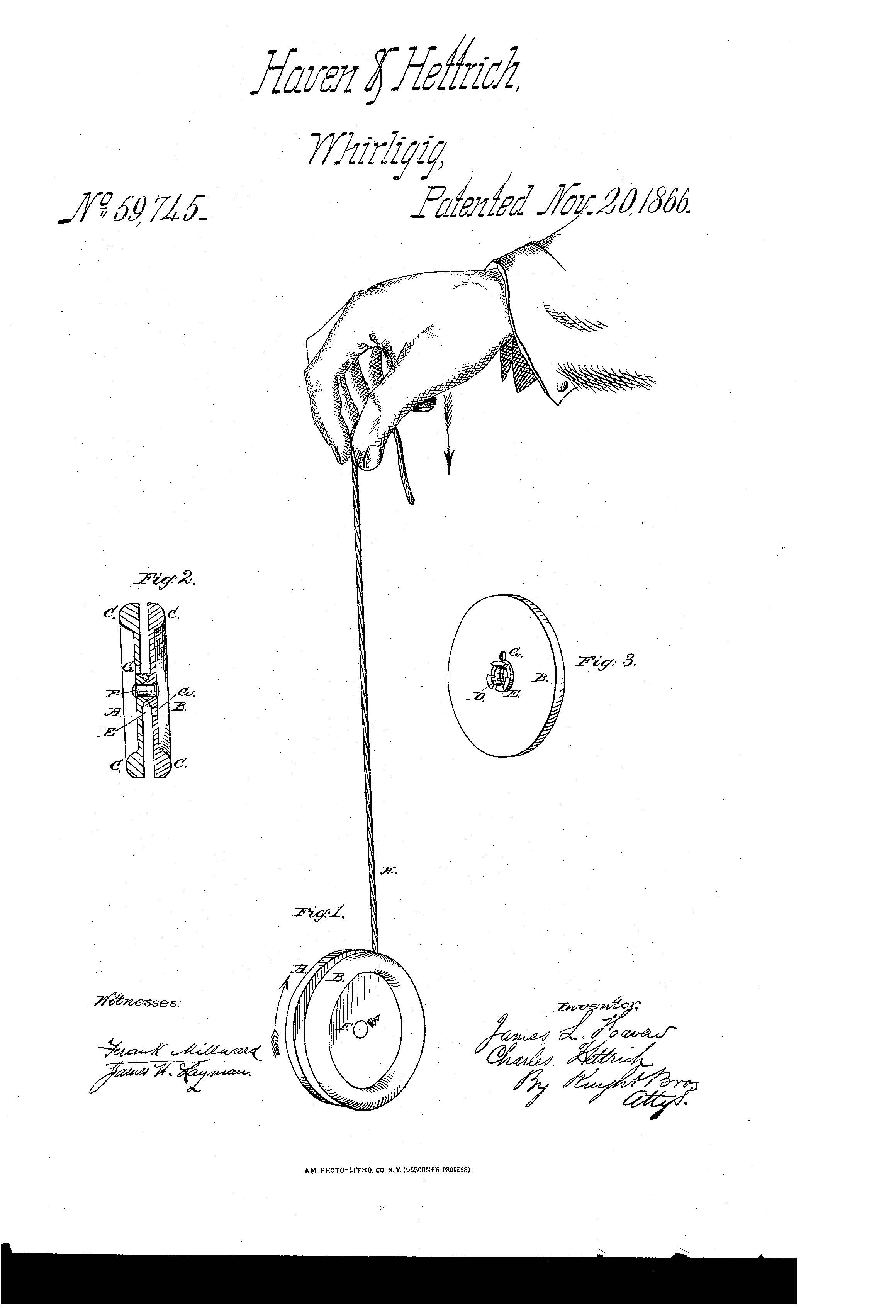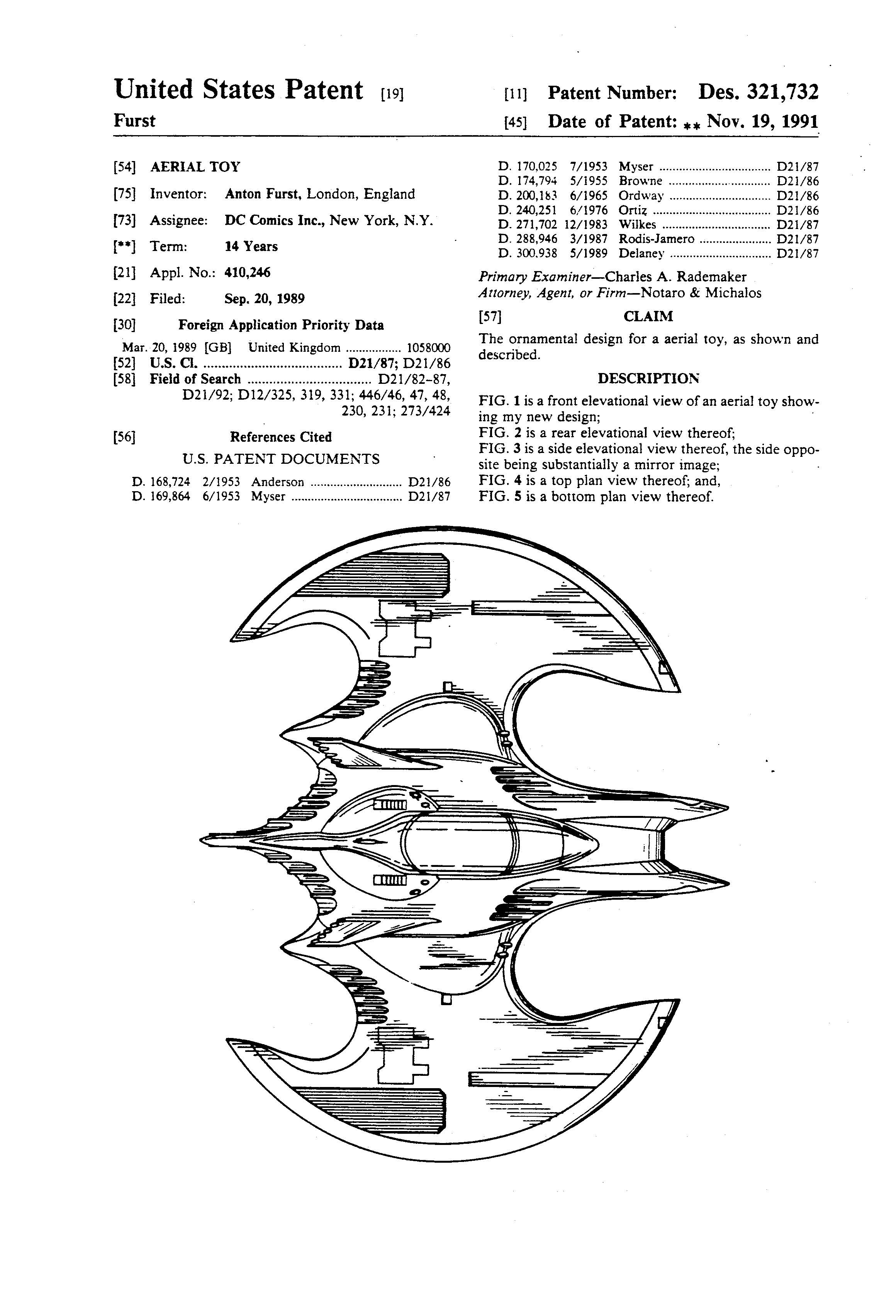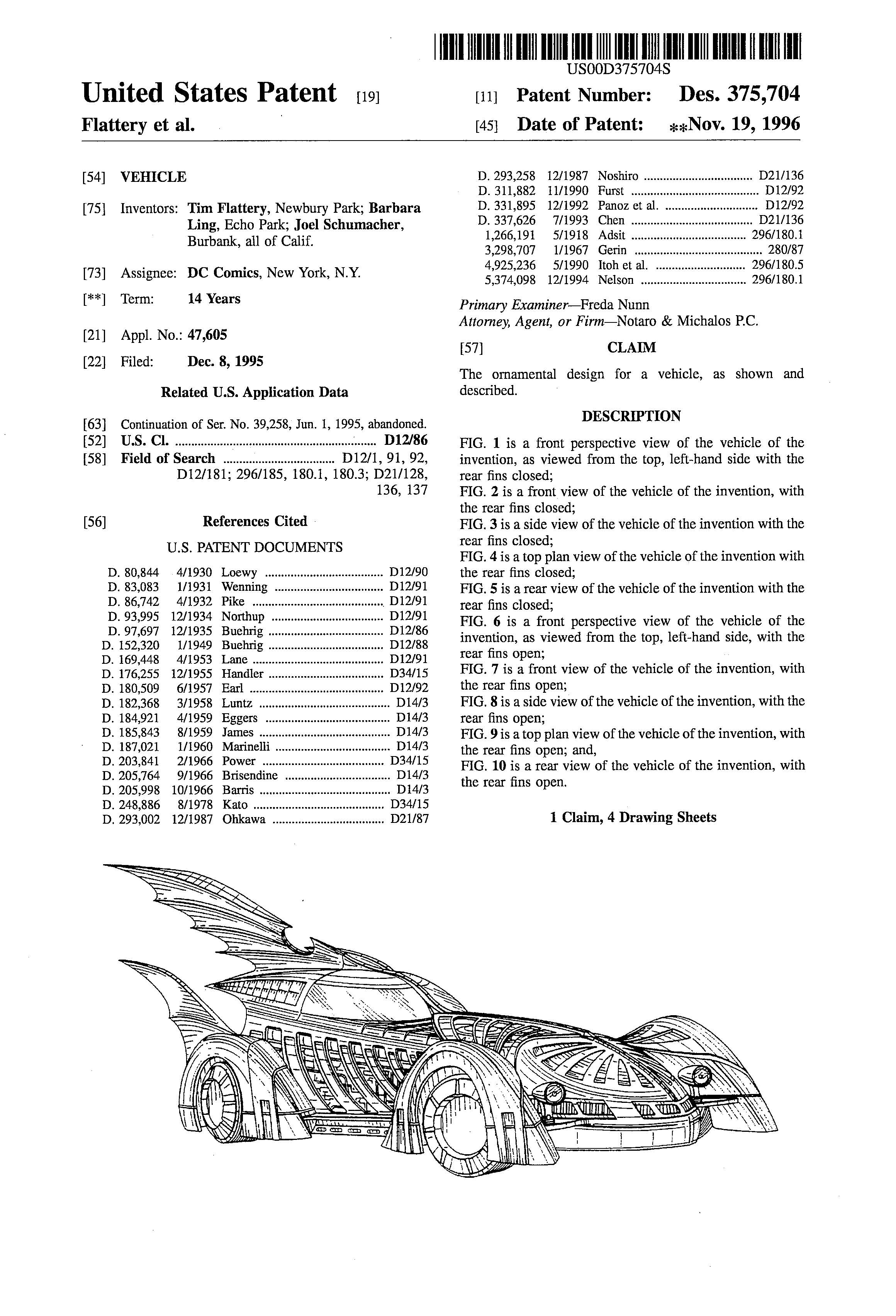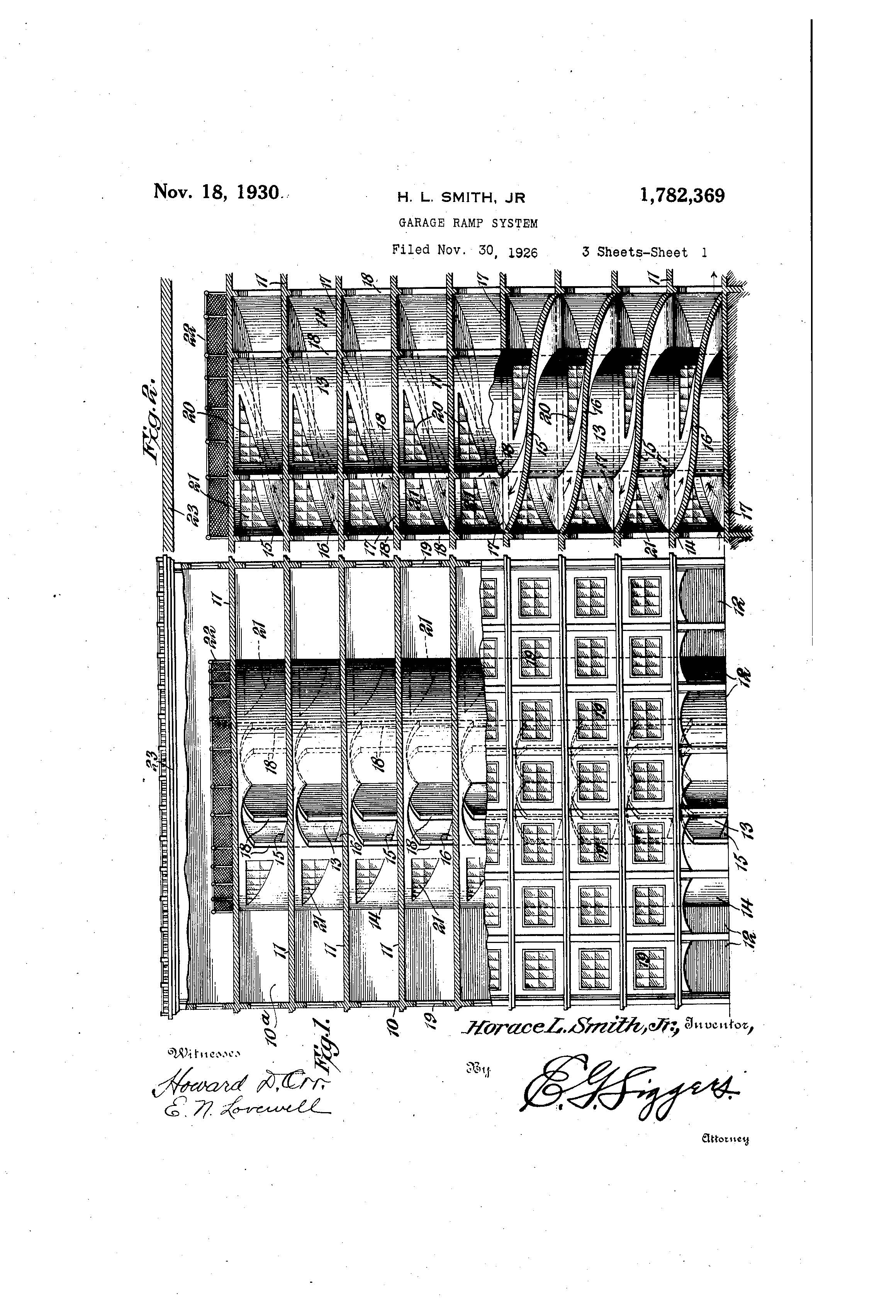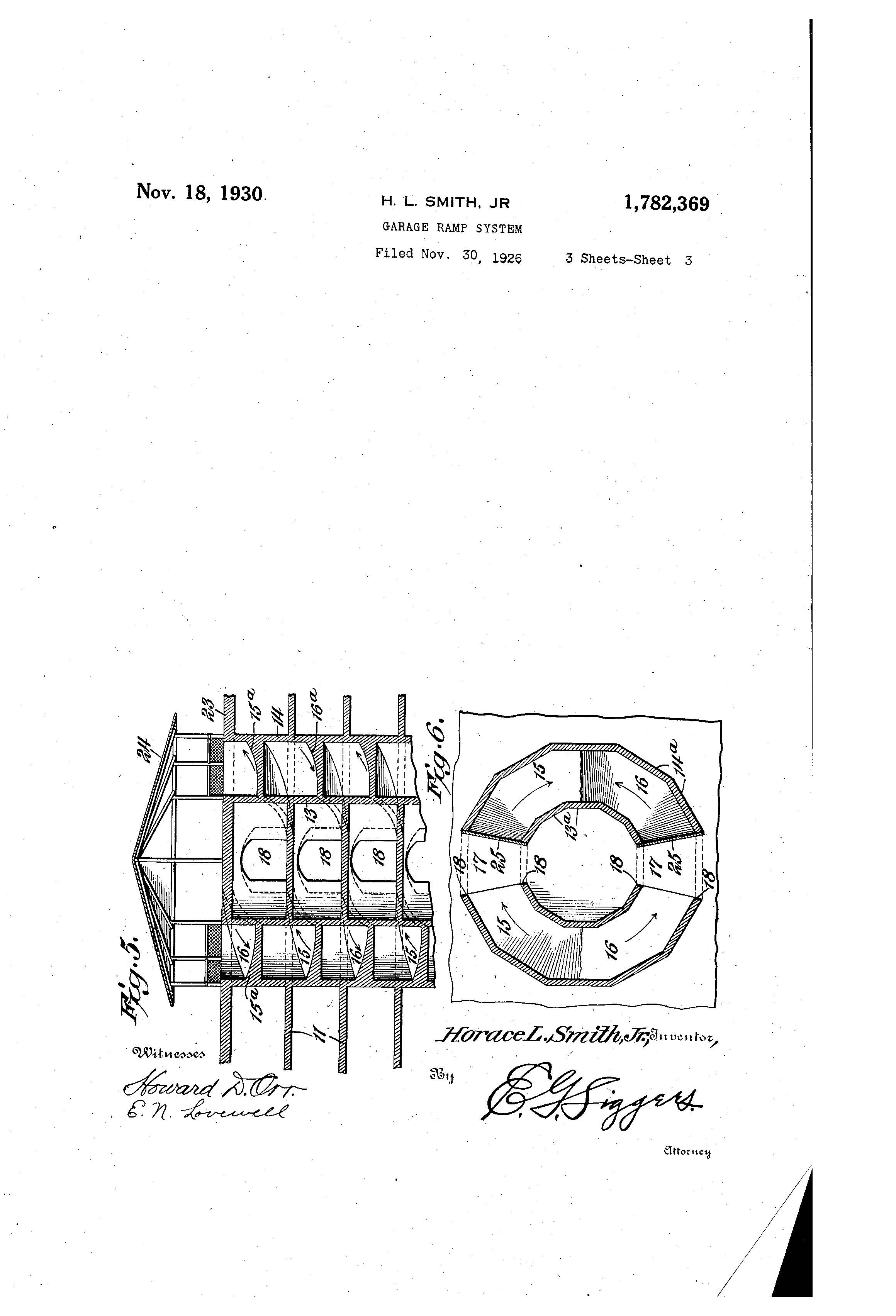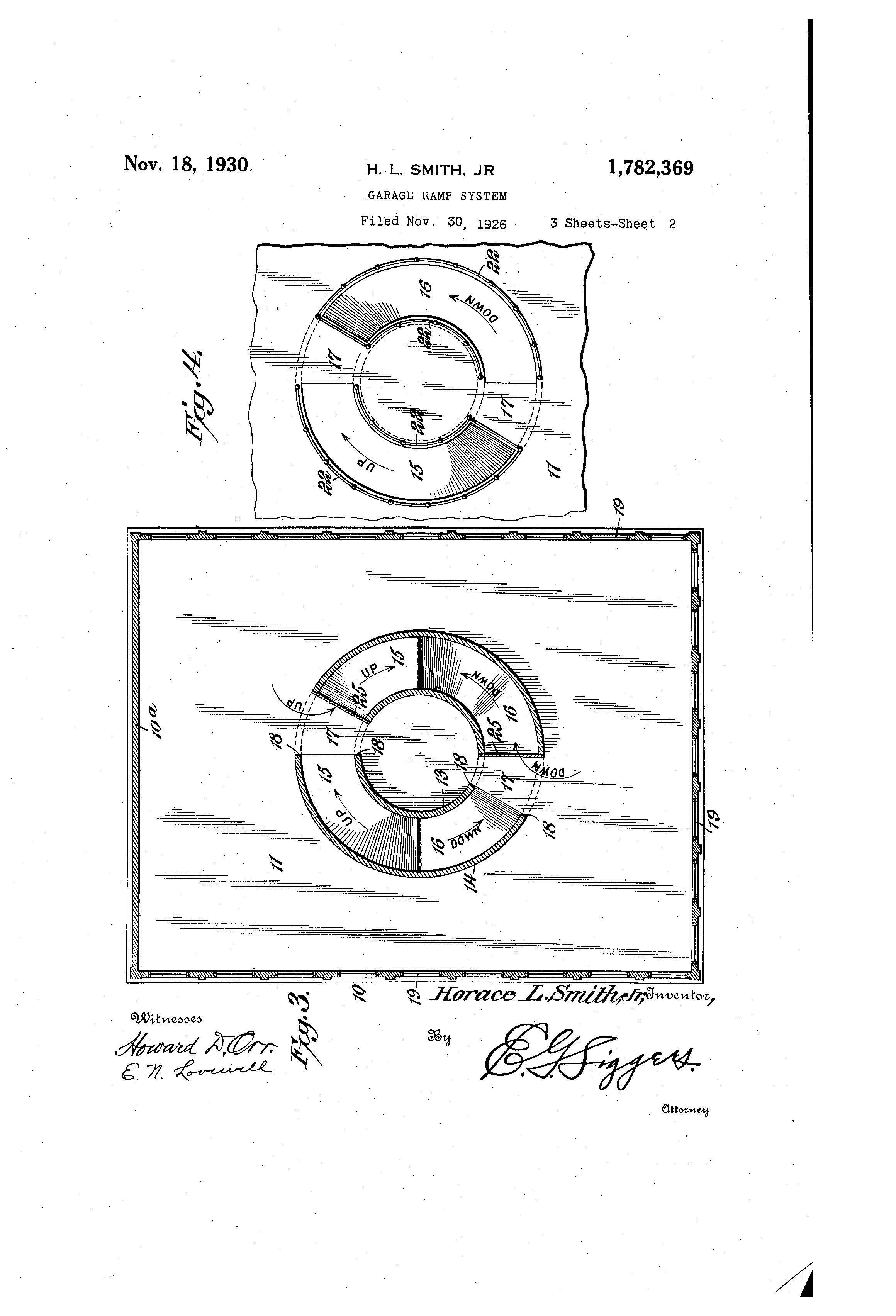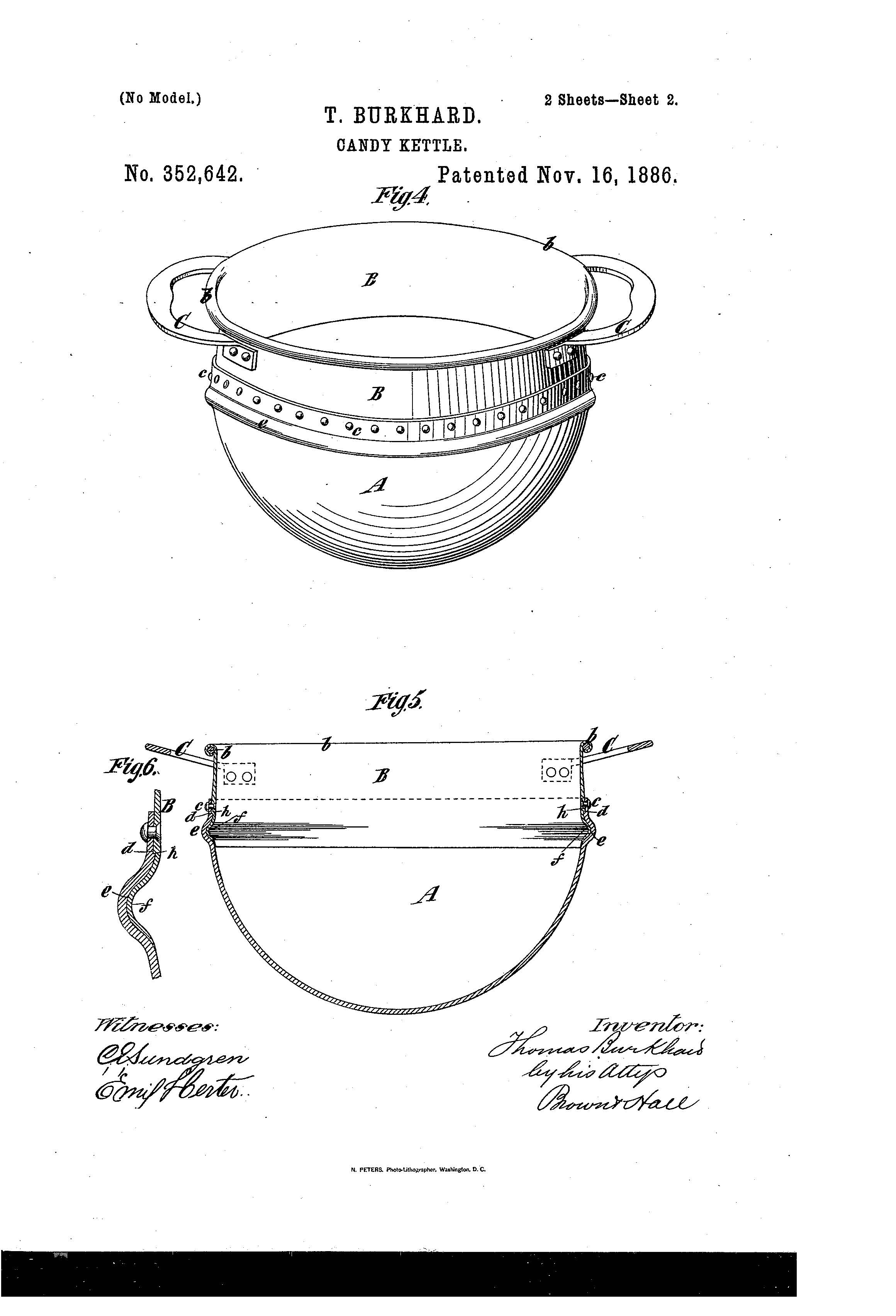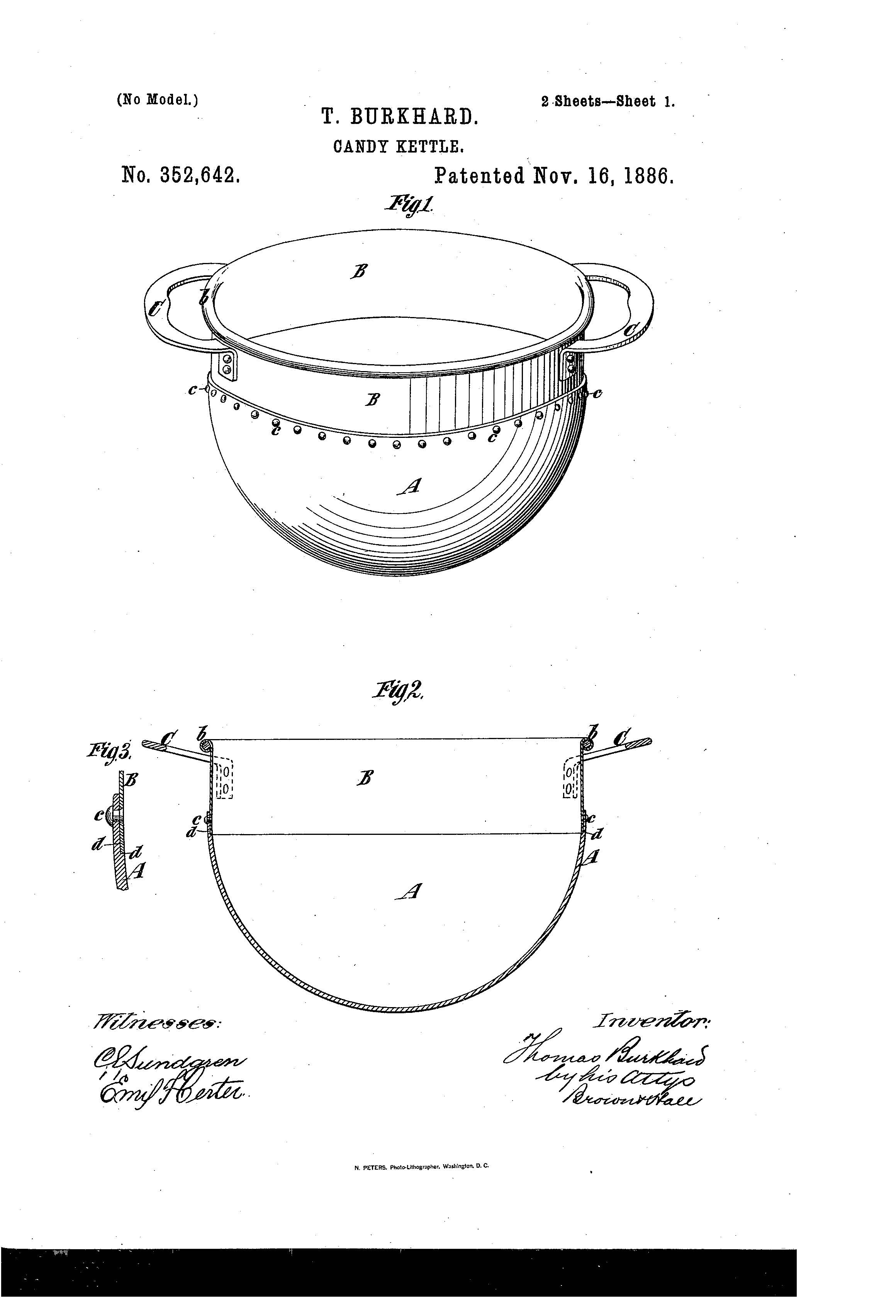Patent of the Day: Home Security System Utilizing Television
On this day in 1969 the patent for Security System Utilizing Television Surveillance was granted. U.S. Patent No. 3,482,037.
The Home Security System Utilizing Television Surveillance was invented by Marie Van Brittan Brown and Albert L. Brown, from Jamaica, New York on December 2, 1969 as U.S. Patent No. 3,482,037.
The video and audio security system is for a house under control of an occupant thereof. The system includes a video scanning device at the entrance door of the house to scan a visitor outside the door, and includes audio intercommunication equipment inside and outside the door for conversing with the visitor outside the door. A lock is provided for the door with releasing means for the lock manually controlled by the occupant of the house.
This invention may have been created almost 50 years ago but we still use it today. Apartment buildings with secured entries use this, so do certain stores, as well as houses. With crime rates going up in a lot of places, people want to feel more secure and this is a great way to help with that. With this invention you will always know who is at the door and what they want. This eliminates you having to open the door not knowing what is waiting for you on the other side.
One of the perks this invention is not just that it’s a security camera but that it is also a security system. An alarm can be triggered to deter the would-be criminal and to alert a security guard or the police. The new advances of this have led to things like ADT or other home security systems. The new systems can even monitor the inside of the house and alert the fire department if a smoke alarm should go off.
Before we end this article, let’s just take a minute to appreciate the drawing of this invention. You have to chuckle just a little at the criminal’s appearance; they did a great job of making him look like a creepy intruder.
The Fallout of Teva Pharmaceuticals USA, Inc. v. Sandoz, Inc.
On January 20, 2015, the Supreme Court decided that a district court’s factual findings would receive an added degree of deference. Rather than be treated under de novo review, the Supreme Court held that factual findings made by a district court in determining claim construction will be reviewed under a clear error standard. The fallout of such a holding will be manifest in years to come. Nevertheless, practitioners were given a glimpse at how the effects will be felt when the Federal Circuit took up the case on remand.[2]
On remand, the Federal Circuit reconsidered the factual findings made by the district court, specifically those made with respect to testimony given by Teva’s expert, Dr. Grant. Despite reconsideration, the Federal Circuit held their ground, reaffirming that their prior determination of indefiniteness had been a legal determination. In other words, under the de novo standard of review with respect to claim construction, and under the clear error standard of review with respect to the factual aspects of Dr. Grant’s testimony (i.e., regarding the meaning of ‘molecular weight’ despite the use of a chromatogram and calibration curve in one of Teva’s examples), Teva’s claims to a method for manufacturing copolymer-1 as defined by its molecular weight are indefinite due to the multiple definitions that exist for the term ‘molecular weight.’
The Federal Circuit reached their holding in part due to prosecution history that gave different meaning to the disputed term than the meaning relied on by Teva during litigation. In light of the conflicting uses of the disputed term, the Federal Circuit’s burden of reaching a legal conclusion without disregarding factual findings unless there was clear error was diminished. In fact, it would have been more interesting to see what decision would have been reached had the prosecution history been in favor of, or at least silent with respect to, Teva’s litigated definition of the term. Had there been no conflicting uses of the term, the Federal Circuit would have been required to more carefully consider and weigh the District Court’s factual findings to reach its conclusion.
Nevertheless, because the prosecution history was not in Teva’s favor, the Federal Circuit held the claims to be indefinite and gave this sobering reminder, “The public notice function of a patent and its prosecution history requires that a patentee be held to what he declares during the prosecution of his patent.” Springs Window Fashions LP v. Novo Indus., L.P., 323 F.3d 989, 995 (Fed. Cir. 2003). In other words, practitioners who are unsure about the meaning of a claim term, as understood by those skilled in the art, should think twice before establishing a record that could be the linchpin for infringers and potentially result in the death of a client’s patent.
Another effect of the Teva holding may be a reduction in the number of cases relying on § 112 to challenge validity. This is foreseeable because as the District Court receives a greater degree of deference, appeals to the Federal Circuit regarding claim construction and ultimately validity will be harder to win. Therefore, the number of § 112 cases cited at the Federal Circuit level will likely decline.
The following graph shows the frequency of some of the top-cited § 112 cases versus the frequency of patent filings:
The cases utilized are Markman[3], Phillips[4], Vitronics Corp.[5] and Graham[6] and the patent filings are scaled by 0.0008. Obviously Graham is not a § 112 case, but I was interested to see how a top-cited § 103 case correlated with patent filings.
As shown above, in more recent years (e.g., 2010-2014) there appears to be a fairly strong correlation between § 112 cases cited and patent filings. In contrast, Graham appears to show little correlation.
My prediction is that these associations will reverse. In other words, the § 112 cases cited (at least at the appellate level) will begin to decline in light of Teva. Furthermore, although there is little correlation now between patent filings and cases citing § 103, parties appealing cases to the Federal Circuit will rely more often on precedent from § 103 cases (and § 101 cases due to Alice[7]). The reversal will occur because like issues dealing with § 101, the issues with § 103 are less factual (i.e., requiring a greater degree of judgement). Because these issues are less factual, they will have a higher likelihood of success at the Federal Circuit because they will likely receive the de novo standard of review.
The repercussions of the added deference granted in Teva will take time to fully comprehend. Nevertheless, one effect is certain. Practitioners need to continue to be vigilant when prosecution history is being established.
[1] Teva Pharmaceuticals USA, Inc. v. Sandoz, Inc., No. 13-854, slip op. (S. Ct. Jan. 2015).
[2] Teva Pharm. USA, Inc. v. Sandoz, Inc., No. 12-1567-1570 (Fed. Cir. Jun., 18. 2015).
[3] Markman v. Westview Instruments, Inc., 52 F.3d 967 (Fed.Cir. 1995).
[4] Phillips v. AWH Corp., 415 F.3d 1303 (Fed.Cir. 2005).
[5] Vitronics Corp. v. Conceptronic, Inc., 90 F.3d 1576 (Fed.Cir. 1996).
[6] Graham v. John Deere Co. of Kansas City, 86 S.Ct. 684 (1966).
[7] Alice Corp. v. CLS Bank International, 573 U.S. __, 134 S. Ct. 2347 (2014).
Patent of the Day: Baby Comforter (Pacifier)
On this day in 1903 the patent of the Baby Comforter was granted. U.S. Patent No. 745,920.
The Baby Comforter, known today as pacifier, was invented by Harvey Spencer on December 1, 1903 as U.S. Patent No. 745,920.
Mr. Spencer’s invention was created to comfort and quiet young babies, an object being to provide a device for this purpose that shall be simple in construction and that when placed in a child’s mouth will not only serve to solace the child, but will afford slight nourishment.
The body portion of the comforter consists of a shank 1, on one end of which is a bulbous or ball-like head 2, and on the other end is a flattened disk-shaped head 3. The body portion is solid or imperforate and may be made of any suitable material – such, for instance, as hard rubber, porcelain, or the like. A soft rubber-like nipple 4 is designed to be engaged over either one of the heads 2 3.
Throughout time the Baby Comforter has been improved upon but in some cases accidentally made dangerous. Back in the early 1900s when the Baby Comforter was first coming around some Baby Comforters contained lead, others were made of coral, and some were even made of small vegetable gourds. Thank god for the sap from rubber trees.
We have often heard parents refer to their child’s Baby Comforter as a Binky, but here’s an interesting fact not many know about; Platex owns the registered trademark for that name. They registered the name in 1935 and have sold multiple items under the name Binky and it has now become synonymous with pacifier.
Although pacifiers have made a significant comeback, back in the 1900s people were trying to have Baby Comforters banned, but we’ve come a long way since then. Now almost all babies use them, and it’s not such a bad thing. As a mother I can personally say pacifiers were a godsend and know they saved me from many sleepless nights!
Patent of the Day: Glass Jar (Mason Jar)
On this day in 1858 the patent for Glass Jar was granted. U.S. Patent No. 22,186.
The Glass Jar, known today as Mason Jar, was invented by John L. Mason on November 30, 1858 as U.S. Patent No. 22,186.
John Mason already had patents for screw-tops bottles/jars or nozzles and caps bottles/jars but made improvements to those by changing the mold. He made the thread on the exterior of the neck, and left a portion of the neck above the thread of such diameter that the bottom of the groove between the thread shall be fully flush with it, and he also terminated the screw-thread at the lower end before it reaches the shoulder-swell of the bottle or jar leaving between the lower end of the thread and the shoulder a groove directly around of a depth which makes it flush with the bottom of the thread-groove. The thread at both ends is made to vanish onto the neck before it reaches the top the bottom thereof.
This invention described above has been a staple in almost every home and every store. Who doesn’t remember their grandparent’s house with shelves stocked with mason jars filled with the veggies or fruits they had just canned for the season.
The peak of the mason jar was around the 1880s and 1890s, most of the jars that were produced had mold numbers on them, or letters on the base, these letters and molds may have designated where the jars were manufactured, for example W.C.D. is a product of the W.C. Depauw Glass Company in Albany, Indiana.
The mason jar has had many resurgences, when the wars were happening they were using mason jars to can food items for the troops. In the 60’s and 70’s with the back-to-land DIY movement and now you see mason jars everywhere; bars and restaurants are using them for drinks, bridal parties have them monogramed, people are even decorating them and using them as plant holders or other crafty items.
http://www.glassbottlemarks.com/masons-patent-november-30th-1858-antique-jars/
Patent of the Day: Diagnostic X-Ray Systems (CT-Scan)
On this day in 1975 the patent for Diagnostic X-Ray Systems was granted. U.S. Patent No. 3,922,552.
The Diagnostic X-Ray Systems, known today as a CT Scan, was invented by Robert S. Ledley on November 25, 1975 as U.S. Patent No. 3,922,552.
The Diagnostic X-Ray Systems is a machine used for examining the interior of a patient which includes moveable support for the patient, a frame having an opening adapted to circumscribe the patient, a shutter assembly, an X-ray beam source mounted on one side of the opening with a detector unit mounted on the opposite side of the opening such that a beam emitted by the source passes through the patient prior to reception by the detector. The machine also includes mechanisms to rotate and tilt the framework to get a better image of the patient.
I think it goes without saying that this invention has been a huge breakthrough in the medical imaging field. Doctors can now see what they were once unable to see and help detect and diagnose things at a faster, more accurate rate. It has also been huge in the areas of preventative care.
When the Diagnostic X-Ray Systems was first invented it could only take images of the head and it took over 4 minutes for one slice acquisition. Now with the advances of technology CT Scans can take images in less than half a second and, thanks to Dr. Ledley, do a complete body scan in seconds as well.
This machine was first used on a patient at the Georgetown University hospital, where a toddler was taken after falling off his bike and hitting his head. With the CT scanner, doctors scanned his brain and detected a blood clot that, unnoticed, might have killed the toddler.
Dr. Ledley sold his company, Disco, that produced the scanners, to Pfizer. He also went on to patent over 20 inventions in his lifetime, one of those being the skid-resistant crutches.
https://www.washingtonpost.com/local/obituaries/robert-s-ledley-physicist-who-invented-first-full-body-ct-scanner-dies-at-86/2012/07/26/gJQA0TxaCX_story.html
Patent of the Day: Wire Fences
On this day in 1874 the patent for Wire Fences was granted. U.S. Patent No. 157,124.
Wire Fences was invented by Joseph F. Glidden, of De Kalb, Illinois. This patent application was granted on November 24, 1874 as U.S. Patent No. 157,124.
Mr. Glidden’s invention, which we now know today as barbed wire fence, has relation to means for preventing cattle from breaking through wire fences; and it consists in combining, with the twisted fence-wires, a short transverse wire, coiled or bent at its central portion about one of the wire strands of the twist, with its free ends up projecting in opposite directions, the other wire strand serving to bind the spur-wire firmly to its place, and in position, with its spur ends perpendicular to the direction of the fence-wire, lateral movements, as we all vibrations, being prevented.
This invention is rumored to have come about because Joseph’s wife Lucinda wanted him to enclose her garden to keep animals out so he began to experiment with the fence by adding barbs to it.
Apparently this invention brought on quite the legal battle between Joseph Glidden and Jacob Haish. Haish, who titled himself the inventor of the barbed wire fence, had patented his own version of the fence but had not been doing much with it by means of promoting or selling it. Since Glidden was originally denied his patent Haish swooped in and quickly filed his patent for “S-Barb” in July of 1874, he also filed interference papers which caused even more of a battle. When all was said and done Haish was awarded his patent first but Glidden won the argument because he had filed his patent before Haish.
We still see barbed wire fencing used today for farming and security purposes in jails, prisons, military bases, the list goes on. Of all these places Glidden’s style of fencing is still the most familiar style of barbed wire fence used today.
http://www.rushcounty.org/barbedwiremuseum/bwhistory.htm
Patent of the Day: Parcel Carrier for Bicycles
On this day in 1897 the patent for Parcel Carrier for Bicycles was granted. U.S. Patent No. 593,978.
The Parcel Carrier for Bicycles was invented by Frederick J. Boehm, of Brooklyn, New York. This patent application was granted on November 23, 1897 as U.S. Patent No. 593,978.
Mr. Boehm’s invention consists of two sets of curved steel springs, each set consisting of one small spring to be forced over the handle-bar and to hold itself thereon by its spring-pressure and the other which is attached thereto and projects forwardly, being larger and curved so as to have open sides up. The two sets of springs are united by a bar.
The object of Mr. Boehm’s invention is to provide a cheap and simple device for parcels for bicycles to be used for carrying coats and other small packages.
This invention I’m sure came in very handy, especially for those living in big cities such as Brooklyn. The congestions of the city can make it hard to get around by car or public transportation. This invention would be perfect if you had to run to the store to get a small gift. You can just attach it to the Parcel Carrier for Bicycles and not have to worry about where to put it so it doesn’t fall or get broken.
Another feature that would be beneficial is the fact that it can hold coats. Riding a bike is a great way to get around town but let’s be honest; you can work up quite the sweat peddling around. Before this invention you had to figure out where to put your coat so that it wouldn’t get dirty or hang so low it got stuck in the gears, causing a lot of damage to the rider and the bike.
Today everything is all about “hands free”. I feel this invention was the “hands free” version for bikes. If you could only ride with one hand while holding the parcel in the other that spells disaster. You couldn’t properly signal your turn, nor could you safely operate the bike if you had to go through an area with sharp turns. This invention freed up your hands so you could ride safely. 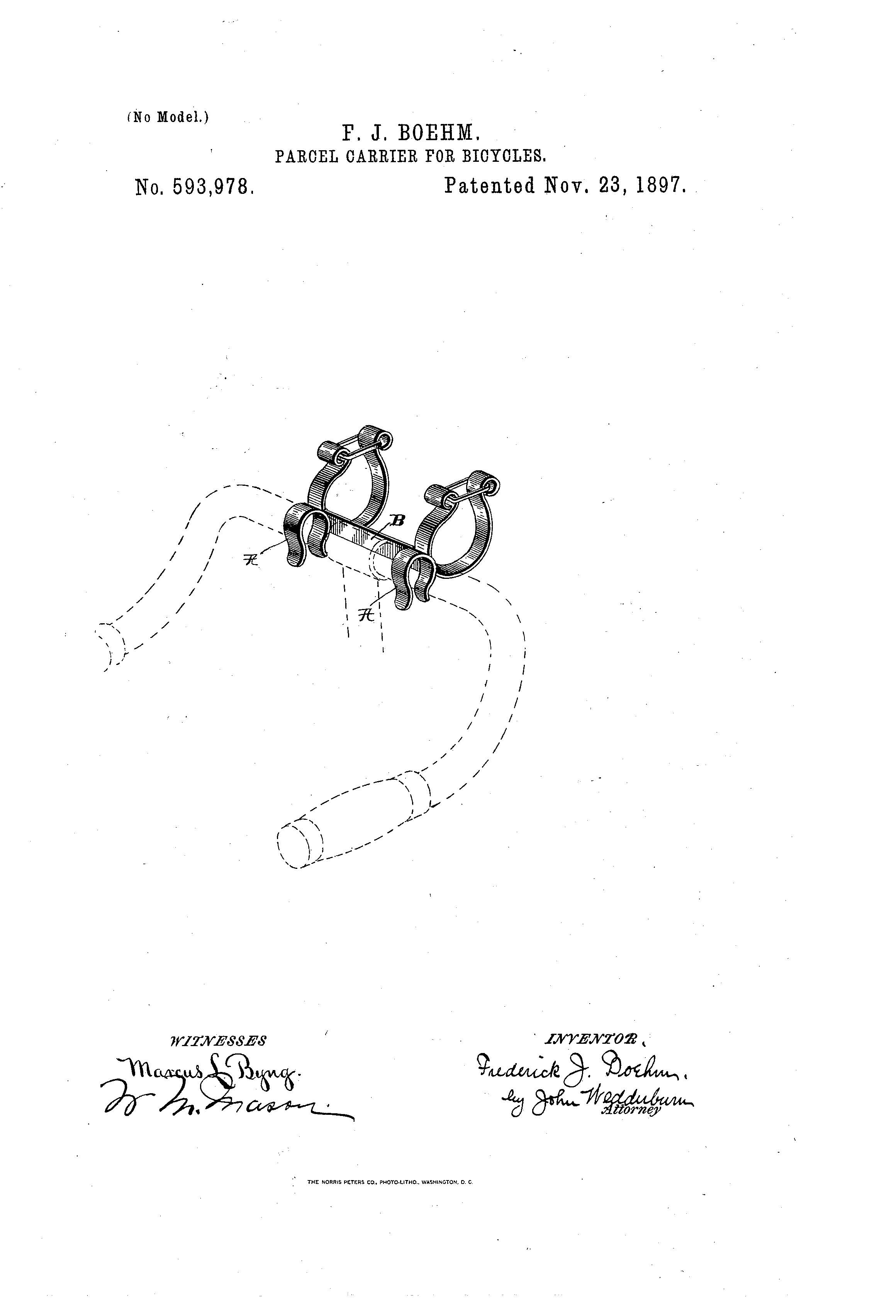
Patent of the Day: Whirligig (Yo-Yo)
On this day in 1866 the patent for the Whirligig was granted. U.S. Patent No. 59,745.
The Whirligig was invented by James L. Haven and Charles Hettrick, of Cincinnati, Ohio. This patent application was granted on November 20, 1866 as U.S. Patent No. 59,745.
The above mentioned invention has gone by many names, the banderole, the Whirligig, and most commonly now known as the yo-yo. The Whirligig has two similar plates or disks, having on their outer sides a marginal rim or swell and having a central aperture, surrounded on the inner side of each disk by an indented annular boss, the indentation of one boss being adapted to receive the projections of the other boss, so as to interlock firmly together on the principle of a clutch on the insertion and clenching of a rivet.
The yo-yo has been around for over twenty-five hundred years, it is considered the second oldest toy in history. In Greece the toy was made of wood, metal and terra cotta, it would be decorated with images of Greek Gods and placed on an alter to pay homage. In some countries such as the Philippines, they actually used the yo-yo as a weapon! They put sharp edges and studs on it and would fling the yoyo on a twenty foot rope at enemies.
The yo-yo didn’t start gaining momentum in the United States until the 1920s, A Philippine immigrant Pedro Flores started mass producing them and calling them yo-yos. D.F. Duncan Sr. liked what Pedro was doing, bought the rights from him, and trademarked the name Yo-Yo in 1929.
Although this invention is not as popular as it once was, selling 45 million units in 1962, it still entertains children and some adults. Who doesn’t remember getting their first yo-yo as a kid and spending countless hours trying to master it and some of the fun tricks you’d seen; walk the dog, the sleeper or around the world. Again, not the most popular toy out there now but a great memory of almost every childhood.
http://inventors.about.com/od/xyzstartinventions/a/yoyo.htm
Patents of the Day: Vehicle and Aerial Toy (Batmobile and Bat Plane)
On this Day in 1966 the design patent for the Vehicle was granted U.S Patent No. Des. 375,704. Also on this day in 1991 the design patent for Aerial Toy was granted. U.S. Patent No. Des. 321,732.
The Vehicle, otherwise known as the Batmobile, is one of many patented Batmobiles, this vehicle specifically was designed by Tim Flattery, Barbara Ling and Joel Schumacher, of California. This design patent application was granted on November 19, 1996 as U.S. Patent No. Des. 375,704. It was assigned to DC Comics for a term of 14 years.
This design patent is one of many that are registered to DC Comics relating to the Batman movies. The original Batmobile, used in the television series, was granted on October 18, 1966 as application number Des. 205,998.
As times changed so did the Batmobiles, they got makeovers and were made to look sleeker and faster. One Batmobile designed for Batman Forever (1995) was issued 3 patents on just that car alone. The Batmobile from Batman and Robin (1997) was made to resemble a bullet, with wings emerging from the rear of the vehicle when it started and retracting when the vehicle came to a stop.
Not only have the Batmobiles been issued design patents but a lot of the items you seen in the films have also been granted design patents. The plane that Batman flies in most of the films was patented on November 19, 1991 as Des. 321,732, Batman’s “Head Dress was also was patented on September 15, 1992, Des. 329,321. Even the gadgets that he uses have been patented.
Recently in the world of intellectual property Batman has been making the news. A manufacturer and seller of automobile replicas was selling replicas and kits to customers to modify the car to look like the Batmobile, he even advertised the car as the Batmobile. DC Comics filed suit against the seller and the courts held that the Batmobile was a “character” entitled to copyright protection. This decision was again affirmed on September 23, 2015 by a three-judge panel of the Ninth Circuit.
Patent of the Day: Garage Ramp System
On this day in 1930 the patent application for Garage Ramp System was granted. U.S. Patent No. 1,782,369.
The Garage Ramp System was invented by Horace L. Smith Jr., of Richmond, Virginia. This patent application was granted on November 18, 1930 as U.S. Patent No. 1,782,369.
One of the objects of Mr. Smith’s invention is to provide a multi-story garage having a ramp unit so constructed and arranged that ascending and descending automobiles may be driven through, into and out of the ramps without interfering with each other, and a maximum number of automobiles may be driven through the system within a given time.
Other objects and advantages of this invention is that each of the floor and aligned openings are provided in the walls and permit automobiles to enter them. Further, the floors in the core portion of the ramp are a part of the floors of the building. The openings are so arranged that an automobile may be driven from any main floor directly into the core portion for services and this enables traffic to move rapidly.
Also since the ramps have a pitch of two stories, exit doors for the ascending ramp and entrance door for the descending ramp will be arranged one above the other on opposite sides. That is the door on the second floor above the ascending ramp door leads to the descending ramp, and the doors for the ascending ramp and the descending ramp on any floor will be on opposite sides of the ramp structure or unit. This arrangement enables motorists to avoid traffic going in the opposite direction on the floor. In fact, the open driveways on the floors may be so arranged that, at no time, will a departing motorist cross the path of one who is parking.
Although this invention is almost 100 years old, it is still very relevant in bigger cities like New York and Chicago where parking is a premium. This invention allows cars to be off the streets but in a safe spot so vandalism, accidents, and weather incidents are not as likely to happen.
Patent of the Day: Adjustable Embroidery Hoop
On this day in 1903 the patent for Adjustable Embroidery Hoop was granted. U.S. Patent No. 744,070.
The Adjustable Embroidery Hoop was invented by Helen A. Harmes, of Washington, Missouri. This patent application was granted on November 17, 1903 as U.S. Patent No. 744,070.
The Adjustable Embroidery Hoop was invented to produce a device which will hold the material firmly, that is adjustable to size, and that can be supported easily by one hand while in use.
Ms. Harmes’ invention consists, essentially, of an inner and outer ring, both having means whereby their diameters may be varied and one of which is adapted to fit closely around the other, and a rest or support carried by the inner ring. In the past when working on a large design you would have to move the embroidery hoop to the new section but with the Adjustable Embroidery Hoop you can set the size of the hoop prior to starting your work.
There have been many findings of embroidery from all over the world; it is an art form that can be traced back to as early as the Iron Age. Historical discoveries have shown people embroidered on everything from silks to animal skins and used extravagant threads of gold. Throughout time the detail and fabrics became more and more extravagant and have now become works of art that are in museums for all to see.
Many countries told stories of their culture with their embroidery, those cultural stories varied from country to country as did the art forms. One of the most famous historical events recorded/embroidered on fabric is the Bayeux Tapestry. It shows the events leading up to the Norman invasion of England and the Battle of Hastings in 1066.
Unfortunately embroidery is not as popular as it once was. Sewing machines are now able to do the work that could once only be done by hand and in an impressive time. However, there are still those that love to embroider and I think Helen Harmes would be proud to know her invention is still in use today.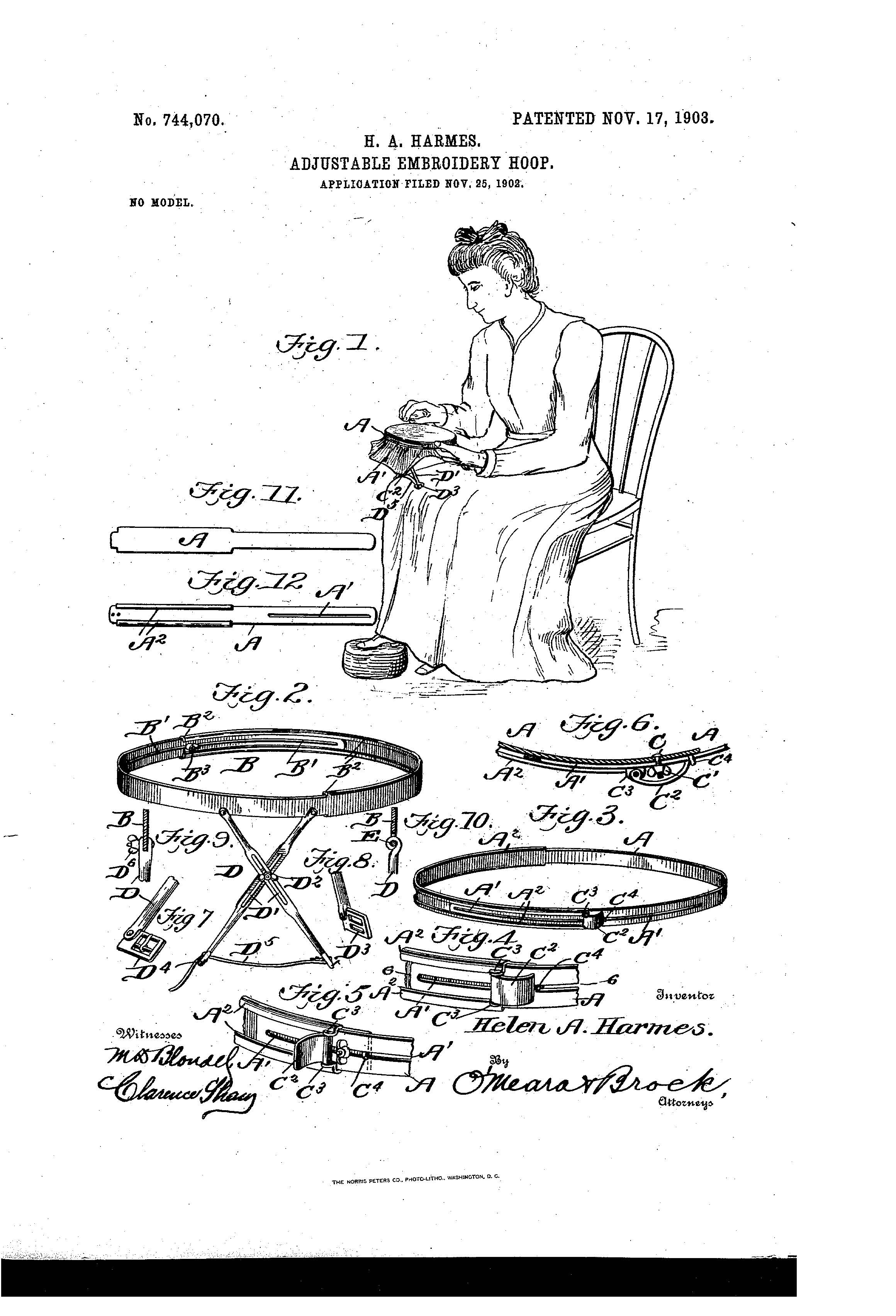
Patent of the Day: Candy Kettle
On this day in 1886 the patent for Candy Kettle was granted. U.S. Patent No. 352,642.
The Candy Kettle was invented by Thomas Burkhard, of Brooklyn, New York. This patent application was granted on November 16, 1886 as U.S. Patent No. 352,642.
Mr. Burkhard discovered that if a kettle which has its surface with which the candy comes in contact of cast-iron or cast-steel be employed for cooking candy the kettle will not, after being overheated, impart a burned taste to candy subsequently cooked in it.
Mr. Burkhard found that the objects being employed for cooking candy have been made of copper or have copper bottoms, and great care has to be exercised in their use, as they will burn at a temperature of about 300º, and once burned the copper undergoes some change, which will cause it always afterward to impart a burned taste to the candy cooked in it, even though the candy may not be overheated.
I think I can speak for almost every person when I say I do not want my candy to taste burnt. To prevent this Mr. Burkhard invented a Candy Kettle composed of concave-convex shell of cast iron or steel, forming the bottom and a portion of the sides or body, and a body portion of copper inserted within the said shell.
One reason Mr. Burkhead would have left the copper in the kettle is that copper is a great conductor of heat. It heats evenly and holds its heat for long periods of time. Candy Kettles are still used today, although most of them are now strictly copper, they can be purchased on Amazon, Ebay or places that still artistically craft them by hand.
The Candy Kettle plays such an important role in the confectionery world they even have an annual kettle award that was established in 1946. The winner walks away with a Candy Kettle they can proudly display. The award represents the highest recognition an individual working within the U.S. confectionery industry can attain.

